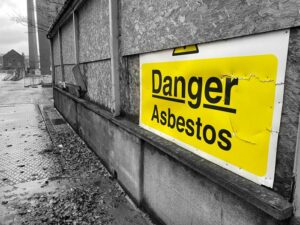Dr Rebecca Booth, an associate principal scientist who has spent over 20-years developing lung cancer treatments tells Air Quality News why we need transparency when it comes to pollution from woodburning stoves.
Over the last decade, wood stoves have become very popular in the UK. The smell of wood smoke is commonplace in cities, towns and rural areas, even on cooler summer days.
Domestic wood burning creates large quantities of particulate matter (PM2.5) pollution in close proximity to where people spend a significant proportion of their time.
However, it’s still not common knowledge that wood smoke – whether visible or invisible – is toxic. There is now a wealth of scientific data which links wood-burning emissions to a wide range of diseases including cancers, impaired cognition, stroke, heart disease, asthma, COPD, and reduced lung and brain function in children.
Raising awareness of the sources and effects of air pollution, and advising the public on how they can help reduce air pollution, is an important part of improving public health in the UK.
Therefore, it’s disappointing and frustrating when misleading information is published which dilutes and confuses key health messages.
The Stove Industry Alliance (SIA) is a trade association that serves the interests of those manufacturing and selling stoves. It makes strong statements about stove emissions and the benefits of ‘EcoDesign’ stoves.
The SIA’s website avoids sharing key pieces of information which would allow consumers to gauge the relative polluting power of an ‘EcoDesign’ stove versus other sources of domestic heating. The result is that consumers, many of whom have children and who do not currently have a stove or open fire in their home, are being lulled into investing in a home burner which is harming themselves and the community in which they live.
Let’s consider the information in the SIA’s video ‘SIA Wood Burning Stoves Misconceptions’.
The video states that domestic wood combustion emissions create 13% of UK PM2.5 pollution.
This figure is not corroborated by DEFRA’s independently gathered data which estimates that the real figure is higher. (1)
Even if the SIA 13% figure is correct, the SIA fails to put this figure into context; 13% PM2.5 is the same amount of PM2.5 created by all UK road transport. Since approximately 4% of UK homes have a wood stove or fireplace, a significant proportion of PM2.5 pollution is being created by a very small proportion of UK homes.
The SIA video states that stove emissions are at roof level and therefore are not inhaled by people to the same extent as vehicle exhaust emissions.
However, an ‘EcoDesign’ stove creates the same amount of carcinogenic PM2.5 pollution per GJ as 750 modern HGVs2 and the emissions affect domestic environments where people typically spend 50-90% of their time.
Woodstove chimneys are located within tens of metres of neighbours’ gardens, windows, doors and extractor fan vents. The emissions often linger in the air for many hours after a burning session and are small enough to infiltrate nearby properties easily.
The World Health Organisation states that ‘no PM2.5 threshold level has been identified below which no damage to health is observed.’ (3)
Therefore, PM2.5 pollution from a chimney, dispersed regularly across a neighbour’s property, can cause cumulative harm over time.
The video states that ‘EcoDesign’ stoves are less polluting than open fires and old stoves. This is true, but the SIA has chosen to only make comparisons to the most polluting domestic heat sources. Since many consumers are first-time-buyers of a stove, they are being encouraged to switch from a cleaner heat source, such as gas or electric, to a far more polluting heat source. According to the European Environmental Bureau (2), per GJ of house heating, an ‘EcoDesign’ stove produces far more PM2.5, black carbon, nitrous oxides, methane, carbon monoxide, polyaromatic hydrocarbons and non-methane volatile organic compounds than a gas boiler. This is the case even when the best
quality, seasoned wood is used and the stove is optimally managed, as outlined in Table 1 (data taken from 2)
Table 1: Emissions of air pollutants from heat sources (g pollutant per GJ house heating)
Between 150k-200k stoves are sold each year in the UK (approximately 500 per day) without a health warning.
Most stove owners have a cleaner alternative source of heating and, for those that don’t, the Government could provide substantial grants to switch to a cleaner heat source. Indeed, the costs of grants would be more than paid for by the subsequent reduction in healthcare costs. There are many studies from around the World which have calculated the huge healthcare costs associated with domestic wood stoves. (4)
It’s time to call out the misleading, partial information which encourages people to buy stoves without appreciating the significant pollution and health effects they cause. It’s also time for the Government to plan the phasing out of wood stoves, to protect our health and reduce the burden on the NHS.
The Stove Industry Alliance (SIA) have responded to this article, click here to view
(1) Estimating UK domestic solid fuel consumption, using Kantar data, Summary of results and discussion; Annexe A of ‘Burning in UK Homes & Gardens’ Date: December 2020; Version: 1.0; Project code (Omnicom number): AQ1017
(2) European Environmental Bureau, ‘Where there’s Fire, there’s Smoke – Emissions form Domestic Heating with Wood’, 21st Sept 2021
(3) W.H.O. website, https://www.who.int/news-room/fact-sheets/detail/ambient-(outdoor)-air-quality-and-health
(4) Real Costs of Wood Burning | DSAWSP (woodsmokepollution.org)
Third Party Content. The content we publish may expose you to content and services created or provided by parties other than Air Quality News (“third-party content”). Air Quality News does not review, endorse or assume any responsibility for third-party content and shall have no liability to you for access to or use of third-party content. You access or use third-party content at your own risk and discretion, and you understand that our Terms & Conditions & Privacy Policy do not apply to that third-party content.
















One of the most hidden characteristics of the wood smoke pollution, is that it is bioaccumulative. So no matter how little you inhale, it will be added to some other time inhaling. This characteristic is, for me, the one that needs most transparency.
Was the methodology of the original research included for correct evaluation of results and Government policy guidance. When testing to ISO or BS standards, performance parameters are defined to give statistically reliable results over the widest range of user conditions. The reported wood-burning tests may have been run with casual or deliberate prejudice to produce extreme results?
Two situations can be imagined:
Was the methodology of the original research included for correct evaluation of results and Government policy guidance. When testing to ISO or BS standards, performance parameters are defined to give statistically reliable results over the widest range of user conditions. The reported wood-burning tests may have been run with casual or deliberate prejudice to produce extreme results?
Two situations can be imagined:
I work in the gas industry and am impressed how emissions from premix burners on modern condensing boilers produce very low nox and other harmful products. Yet manufacturers of solid fuel produce harmful products including particulates and is seen as good for the environment. They should be banned!
Much of the pollution in London is attributed to wood burning its a disgrace.
Very well-written article, and I completely concur. The installation of new wood-burning stoves, fireplaces, fire pits, furnaces, boilers, etc. needs to stop, and existing ones need to be phased out as quickly as is feasible. There’s no way to burn wood cleanly and its carbon emissions are contributing to the climate crisis. Burning wood is archaic and dangerous and needs to stop.
Some facts.
Burning wood is in fact carbon neutral if the wood sources are allowed to regenerate.
Expansion & protection of forests is essential for effective carbon capture. Protection of forests by 2030 is far too late. Brazil, unless there is a change of Govt., will accelerate deforestation prior to 2030 probably to a tipping point where the tropical S. American water cycle is disrupted resulting in a dryer savanah type environment. (during Cop26 Brazil hid it latest deforestation data !)
Structural use of wood is a carbon sink.so wider use of timber in the house building industry would be beneficial.
The solution to the residual particulates (& VOC) problem of well designed wood stoves is merely technical and readily resolvable (e.g. catalytic converters and electrostatic filtering of flues.
Is it as toxic as auto emissions? I’m just asking because I smoke some of my food over wood.and I spend more than ten minutes doing this if you can imagine that. However if I lay next to my tail pipe Id die in about 10 minutes….hmmm get rid of autos and I’ll worry bout a wood stove at that point.
Anthony, the fine particulates from wood burning are not the same as NO2 & carbon monoxide etc. from vehicle exhaust. Yes, the tail pipe fumes will probably kill you – and quickly. But the fine particcles (they are in vehicle exhast as well as wood smoke etc) take longer to damage your lungs, heart & maybe even your brain. The effect is slow and cumulative, that’s why you can get away with inhaling bonfire smoke or BBQs etc. a few times a year, even fronm coking, as you say, the body copes with some of that pollution alright in small amounts especially if you are healthy (our lungs work wonders!) but it’s not wise to inhale wood smoke day after day for years. That’s when the wood or coal smoke can injure you – gradually. It is very similarto cigarette smoking, both about burning plant material and that truly is unhealthy for us. I know people did this in the past and still do in many countries but the ill health effects may not be immediately apparent. They may not give you COPD until you are past child bearing/raising age so there is no natural selection pressure against this on us (evolution) but I would think some communities whose infants live in very dense smoke must ahve acquired a sort of immunity by now. Perhaps there are some scientific studies on this?
Fire for heat, for cooking, and for culture is a human right. No amount of human cook fires will compete with the carbon belched from power plants and transportation sectors. Let’s keep our focus on the real issues
And what about the right to breathe? I can assure you living next door to someone who makes wood smoke all day almost all year almsot takes away right to live …. and we’re not talkikng about CO2 or NO2 here, but fine particulate air pollution – not the same.
We cut and split wood. It’s allowed to season.
Our fireplace insert has a catalytic converter in it.
Yes it gets cleaned and maintained each year.
Our fireplace burns cleaner than most vehicles and plants. Before judging, try it. It saves us money in the long run since electricity and gas is really expensive here in the USA.
Not everyone is as careful as you, Terrie.
I am a bit uncertain about what’s going on here. Humankind has lived with wood fires throughout our existence. Whilst I have no doubt that all fires create pollutants, so do most other forms of heating. I guess I believe that something is out of balance here and it feels more like an attempt to control people than create a healthier, happier society
Whilst the closest nuclear power plant is miles from my home, I believe that pursuing further nuclear power is madness, yet it appears to be part of our national strategy. Yes, renewable energy promises much and I look forward to its further development over time.
Historically our homes were heated by coal fires. Whilst this created pollution problems in towns and cities the option for cleaner solutions and smokeless zones led to a move away from their use. My guess is that they polluted on a far greater scale than wood burners ever have.
Most of my adult life I have had a log burner and plan to continue with this. I believe the pursuit of a strategy to demonise their use is not part of the pursuit of a better society
Yes coal burning was unhealthy and still is. But wood burning also gives off pollution and we need to avoid inhaling it. You may be fine indoors with your log buner but what about the smoke you send to your neighbours? Does it make them poorly, have you asked?. I’m sure they want a “better society” too.
I have a wood insert we love it.
I don’t care, I love my wood stove and will be continuing to use it.
Well, please stay healthy then, Mike – and I hope your family, visitors and neighbours do too ….. can take a while before the bad wood smoke health effects kick in -,like cigarette smoke.
What a bunch of b——t!….not many critical thinkers left in the world!
Please tell me how I’m meant to heat my 250 year old house? There’s no access to mains gas, heating oil is hardly clean, honestly city folk blowing smoke up themselves making a problem out of something which isn’t even a real issue.
But it is an issue, a serious health issue, for anyone living next door to a “bad burner” whose constant daily smoke is making others ill. Have you thought about installing an air source heat pump? You can get RHI hlep if apply now or even a £5,000 grant I heard. It will need acces to electricty for start-up and maintenance but minimal. and works well (if you have adequate insulation and radiators for the water that thepump heats).
the world has gone mad completely
if you burn seasoned wood it’s proven it’s as clean as any alternative .. and let us not even consider heat pumps which will be the miss sell of the century, expensive to run and can not convert cold air into warm which is why you have to also have an alternative heat source to back it up
actually surly electric combie type boilers are a good option and harness power from the oceans wind and solar to provide electricity we can all afford, its true the government’s of this corrupt world 🌎 are only interested if they can make money out of it, a heat pump to install in an average semi detached would cost 20k + and it still won’t do the job on its own !!
It’s like electric / battery cars are the golden nugget wake up every one look at the cost not to mention the life expectancy of a battery 7 years and the cost to replace 4k minium on the baby BMW.
imagine the cost on a top end Audi !!
again the car manufacturers and ultimately the government make huge profits here .
why not provide a public transport system that’s non profit making self funding and works so we all ditch our cars and we would, this is the sort of thing we need to campaign for now
blimey we are destroying the rainforest at a collasal rate and the government’s at the stupid Cop 26 have agreed to stop deforestation by 2030 !! WE will all be under water by then & you lot are worried about a few log burners … Wake up
What’s also being missed in this discussion is the manufacturing process of said renewable technologies. The energy used in creating these renewable technologies takes years to gain back and offset against the gains made in pollution, without factoring in the transportation of these huge turbines installation of them and maintenance.
Take the so called energy efficient lights bulb as example. The old style lamps where produced in huge quantities, quick and cheap, they would last for years with just a filament wire and some glass.
The new style energy efficient lamps, take longer to manufacture, use up more natural resources in the product, don’t last anywhere near as long, difficult to recycle.
Modern renewable products some are just as bad. Factor in also the transportation emmisions to drive or fly by helicopter to some of the windfarms.
A well installed, modern efficient wood burning stove is a positive step moving forwards in comparison to older fossil fuel burning stoves. When timber sources are local there is also a reduced carbon footprint.
Before wood stoves are targeted for costing the NHS due to health issues I would suggest ban smoking in the UK. Ban e cigarettes, Ban alcohol, do more to tackle the huge drug problem that has swept through the UK, ban sugary drinks that are sold and misleading, Reduce sugar and salts in food. Force a huge reduction in unhealthy fats. Force the closure of fast food restaurants.
Before commenting on banning a well designed, install and maintained wood burner look at the bigger picture in how to reduce pressure on the NHS and improve air quality.
Certainly a properly running wood stove has a negative air flow. My current air filtering machine does record very little to no pollutants with wood stove. My cooking oven creates more air pollutants in the home. Not sure where this data is coming from. Certainly oil burning boilers create pollution out the stack at the home but also has pollution to transport and refine. Must be inner city data?
Carry on spoiling anything you can , you morons .We’ve lived with far worse than this for years and yet we are still here ,just make life so boring that people will die of boredom , I would rather take my chances and enjoy life.
Your neighbours also want to enjoy life and can’t if you fill their lungs daily with your toxic wood smoke – that’s the point.
There is a new product on the market, The Midcat Puriflue, which uses catalytic converter technology , designed to retrofit to wood stoves, which will reduce the harmful emissions. The Midcat can reduce the harmful VOC gases and particulates.
http://www.puriflue.net, check it out
Thanks for that info
Let’s have an article on pollution caused by holiday cruise ships. Belching out fumes 24/7 all year. Wood fires are an easy target. What would the public reaction to banning cruise holidays?
Agreed. But why do these topics have to be seen in opposition? One can be against the pollution created by cruise ships AND against the pollution from wood burning. Both bad. Wood fires are not an easy target for many as they are now very popular whereas holiday cruises are too dear for many.
Of course they are an easy target because they are a fixture to a house. Whereby cruise ships involve a complex logistical structure and could
substantial job losses. I feel that a majority of people support environmental issues but as long they don’t impact on their personal lifestyle. If we stopped nuclear power would people be happy having substantial electricity cuts.
Or foreign trips in an aeroplane… even COP26 has over 400 private jets flying in to Glasgow!
Has everyone forgotten COP26 already? Electricity is NOT clean, what most people don’t know is that for every one kilowatt of electricity coming out of your plug, three kilowatts of fuel have to be consumed at the power station. Until 100% of electricity is created by renewable energy, running an electric car means you are using three times more fossil fuels than if you were just putting petrol in your car. Heating your house with electricity creates three times more greenhouse gasses than heating it with gas.
Wood on other hand is the only zero carbon heating we have. Trees absorb carbon dioxide as they grow, if the wood is burnt or if the tree lies on the floor and rots exactly the same amount of CO2 is returned back into the atmosphere. Putting 10kg of logs on an efficient stove during an evening creates as much warmth in your home as burning over 100kW of gas in a power station, which in turn saves 25kg of carbon dioxide (enough to offset a 600 mile train journey).
Open fires can produce 300 times more pm2.5’s than the cleanest stove (the Burley Hollywell), open fires are the problem, good stoves are the solution.
Hi Steve,
Unfortunately you failed to mention ‘kiln dried’ wood, which is dried using fossil fuels and then transported to the shops using diesel lorries. It’s not such a green energy as we might believe. Commercial wood is not a zero carbon fuel.
Electricity produced by wind and solar is a zero carbon fuel source (except for the energy needed to produce the hardware in the first place – meaning that nothing is 100% green).
Wood burning stoves emit particulate matter – that’s the issue discussed in the article above.
Fire wood is air dried not kiln dried.
Any real person who uses wood for heat doesn’t buy kiln dried wood, they split it themselves and season it for a year or two. Until a person can produce oil or electric themselves then don’t use that as an argument
Wood is good. Can replace much CO2 intensive concrete and harvested burnt and regrown is climate neutral. Dont kiln dry though… airdry for 2 yrs
But wood smoke still emits unhealthy air pollution
Does not have to be kiln dried… just has to be below 20% moisture content. Best thing to do is buy ‘seasoned’ wood, or buy in bulk and season it yourself with that great big ball of sustainable energy in the sky
I have had my fire 13 years, and never bought a log, pick up windfall, or cut my own for people, store and use damp meter 100% carbon neutral and 100% free and get warm cutting it too, so 200%warmth as well
What about maintenance and decommissioning?
I was disappointed to find out how polluting wood burners can be, having enjoyed my Clearview burner for several years. It cheers me greatly, dispells winter gloom and saves on gas or electric. It means I use less of these fossil fuels, even the following day, because the whole fabric of my little house is still warm.
I only buy wood from a sustainable source, kiln-dried and expensive, but I now try to restrict its use to night-time and when there is sufficient wind to disperse the smoke.
Not perfect, but what about biomass generators, what is their impact on air quality?
You might be wrong about wood burnign being carbon neutral. You would need to have already planted replacement trees some 40 or more years ago to compenstare for the ones you are burning now. Yes, when the trees die and decay they give out the CO2 they hafe absorbed whislt growing and living, but that is a slow process, whereas burning is very fast and given the climate crisis we want to reduced the CO2 level not push it up with more wood burning. We don’t have time for millions of new rreplacement trees to grow, like a crop to be harvested. Letting the dead tree return to nature is also better for enriching the soil and protecting biodiversity. But I do agree that open fires are more of a problem than the latest wood or pellet stoves.
When you are charged VAT on heating oil (not exactley a “luxury” item) and if you lived in a listed building with single pane sash windows away from the gas grid, where solar panels, ground source heat pumps are not an option, even if they weren’t so prohibitively expensive, you would have a different perspective on this. We have 5 flues, which even if sealed off below still represent a freezing column of air into each room like a massive heat exchanger. These houses need working fires or you are just pouring money heat and carbon into the ait in the form of expensive heating oil.
I agree. Listed buildings are a massive issue in terms of retrofitting insulation, double glazing, etc…
What about an air source heat pump and more insulation? Or moving …. sounds very chilly there!
It’s not chilly with the kitchen log burner and living room multifuel going! But with without those it would be unless we use about 500 litres more oil a year which of course would emit more fossil fuel carbon dioxide. I don’t think an air source heat pump would work as we have solid walls, they are only ok for well insulated houses, which we will never be, despite lots of loft insulation and secondary glazing upstairs in winter.
You’d obviously close a chimney at the fireplace level too. We closed ours as hardly ever used the gas fire, and the house is much easier to heat and keep warm. Strongly recommend it.
Yes, they are closed off at fireplace level, except the two in use downstairs. They can’t be closed at the top however to prevent damp build-up. It means each chimney flue is full of cold air down into each room, even if sealed at the bottom. We have 5 such flues in 2 stacks, 3 in 1 stack and 2 in the other. Each stack has an active fireplace which effectively keeps each stack warm like a storage heater. Yes, a lot of heat does go up the chimney, but some would anyway even without a fire and sealed off. This happens via heat transfer through the brickwork, just like any other outside wall, and just remember, the flue brickwork is just 4 inches thick, unlike the external walls which are 9 inches thick!
I’m afraid we are big fans of our wood burner. However I was scared by a number of articles in The Guardian about how the things should be sold with a health warning as they flood your house with toxic nasties. So I bought a cheap PM 2.5 monitor. I can confirm that running the wood burner all evening makes no difference to the reading until … we grill some sausages (mmmmm). Sorry about that to veggies. Anyway now the meter really goes up. So I try a few more experiments. Burn some toast. Woah! That set off a smoke alarm as well, so no surprise really. I could go on about other experiments, but will stop here.
So why are we not looking at levels of pollution indoors? It seems to me that toasters should clearly be sold with a health warning, not wood burners.
Yes, you’re right about the toast & sausies, they do push the PM level right up and that’s why we need to ventilate our kitchens more. But did you monitor the PM level from your wood stove smoke inside your house or outside, as the smoke should have been going up the chimney – in which case it might be your neighbours who get the “benefit”. And did you look at the readings as you re-loaded the stove, when the PM was briefly coming straight out into your room? Might make a difference. And maybe your stove and what you burn in it is cleaner than some ….
I’ve also been monitoring indoor pollution and, notwithstanding how reliable the monitor is, have found little to no increase from using a wood stove, with only temporary spikes when opening the door to refuel.
The truth is that none of our energy sources are currently clean by any measure, and many aren’t sustainable either. We absolutely should recognise the damage caused by these things but what we need is information and solutions, not fear mongering and bans. If the technology is dirty we should be researching how to improve it. The whole discussion around wood stoves at the moment is lacking this. I’d personally be really keen to know if my baffle plate is sufficient or if a catalytic burner is necessary for cleaning the fumes, but nobody is asking these kinds of questions.
The scenario: wood burning technology improves so there are almost no emissions. Great! But then everyone wants to do it. Where does all the wood come from? That’s not a dig at anyone, just an open question. Deforestation is already happening due to food production practices and the use of biomass in power plants.
Nigel, did you use your PM2.5 monitor outside your house or in your neighbour’s house when your wood burner was running? It may surprise you to know that most of the pollution exits your house via the chimney and pollutes your neighbours.
Nigel Barlow check this out if you are talking indoor air pollution from a wood heater : https://cleanairtas.com/departments/wood-heater-installation.docx
Im surprised at the initial high level of pm2.5 . I have a particle detector, though Im not sure how accurate it is. It typically gives a reading of 5 – 15 particles. Once it goes over 10 I put my filter on and the level reduces to at least half.
The heater concerned is obviously faulty as the fumes could be.smelt in the room. Why not use a stove that is working correctly? Because it would not produce the required result.
Yes toasting, frying etc causes small particles, which is why kitchens should be well ventilated. Personally I spend most of my time at home in my lounge, not kitchen. Though of course this raises concerns about all those many apartments which have a single room for the living and kitchen area. Not a good design. But the problem with wood burners is that they pump those particles and other nasties into the air for hours on end during the winter months. It is inevitable that that pollution makes it way into our homes, at least to some extent. They should be outlawed as there is rarely an actual need for such heating systems.
Thank you so much for helping raise awareness of this issue. The burning of wood and other solid fuels is a recent and spreading phenomenon throughout the UK. The impact is worst for neighbours. Time for governments to consign solid fuel burning (back) to history.
Recent? So how many centuries of electric and gas heating has it been since peat, wood and coal were the only source of heat?
Somehow the nation survived.
Good point. Indeed many around the world still rely on wood and coal out of necessity. But just because they “survive” doesn’t mean they are healthy. Natural selection (survival of the species) only requires us to live long enough to reproduce and raise our offspring for a few years. Once they can fend for themselves we are expendable really. And if our lungs are ruined by then, too bad, nature doesn’t care.Now that we know about air pollution we can do better – and not burn peat, coal or wood. Unless that is all there is, or all we can afford.
We’re meant to move forward as a civilisation. Not go backwards to more polluting fuels and practices.
Recent 🙄🙄🙄🤦🏻♂️😂😂😂
Very true
How does the nation fare with biomass burning?
With many premature deaths, chronic illnesses, and disabilities due to stroke, heart attack, severe asthma, cancer, etc., the choice should be made clear. Ambulance call-outs and hospital beds taken will be immediately reduced in line with reducing wood burning.
We are meant to move forward as a civilisation, not backwards to the polluting fuels of the past. Is it not better for our kids and us to live a healthy life, instead of just surviving and coping with the many negative consequences of polluted air?
Yes and been burnt to create electricity, to sell to Joe public and tax.
The population grew and so did density in housing–neighbors should not suffer the fact that someone has to burn wood and take away the rights fo others on their own property. Time to stop this unhealthy practice unless you have the land so it does not effect others, it just continues to pollute the enviornment as a whole–
The truth is ALL fuel causes some pollution somewhere..wood fires are one of the few heating sources that aren’t directly taxed..this is a revenue earner for the government.. simply ,by providing stats about wood burner pollution, the government gets the public on their side…PRESTO, tax the fuel or homes Because the PEOPLE want the selfish wood burner users to pay..No EFFORT and easy revenue for the government.
Great article. It’s about time the crooks who run this industry were called out for the the half truths they choose to publish which are designed to deceive without reference to cleaner alternatives.
Shame the article also do not include the woeful testing process which is a token test designed more as a token fee collecting/revenue raising process. This has been covered by Private Eye magazine.
Excellent article its time the wider media reporting caught up with the facts and expose the truth about the misleading, partial information which encourages people to buy stoves without appreciating the significant pollution and health effects they cause and the Government should be planning the phasing out of wood stoves, to protect our health and reduce the burden on the NHS.
The thing that puzzles me is how pollution levels were shown to drop massively during lockdown when few cars were being driven and people were home and using their stoves much more.
When I was young everyone heated their houses with coal and yet respiratory disorders only seem to have increased amongst younger people since.
A problem with scientific evidence is it’s always superceded later when better technology becomes available.
The whole argument sounds political to me
Not sure about that Julian. I recall bronchitis every winter as a child near London in the days of the smog and asthma often wasn’t diagnosed then as it is now.I looked at the Defra report about air quality during 2020 and it says PM2.5 initially went up not down. pages 15-16 “There is evidence that solid fuel combustion in domestic fires and stoves went up initially after lockdown and that the emissions peak shifted to later in the day. However, this initial increase is likely to have subsided with rising ambient temperatures and would also be limited by fuel stocks. Nuisance reports linked to bonfires and burning of garden waste have risen since the lockdown began despite discouragement and even banning by some local authorities” “An increase in emissions from domestic combustion is supported with evidence associated with the detection of certain markers of particulate matter from wood burning at monitoring sites in Manchester and London. es (e.g. in Edinburgh, (CIEH, 2020)” . p31 “Particle composition changes. For the period of lockdown included in these analyses, absolute concentrations of PM2.5 have increased across the UK. However, as previously described, these increases have been influenced by trans-boundary pollution transport, favouring conditions with higher PM2.5 from mainland Europe”. “The sources responsible for a significant contribution from organic aerosol to PM2.5 concentrations are also not known”. “A detectable change in the proportion of black carbon (BC) arising from wood burning is reported for Manchester and changes to patterns of wood burning emissions are also noted in London. This is consistent with a submission from the Chartered Institute of Environmental Health (CIEH, 2020) whose members noted rising complaints to some local authorities about domestic burning and bonfires. This source of potential pollution change warrants further investigation”. p35 “In spending more time at home, it is likely that more activities will take place that are known to impact indoor air quality, particular examples being smoking, cooking, cleaning, DIY activities, and solid fuel burning (CEIH, 2020; Heydon and Chakraborty, University of Nottingham, 2020). “and there is anecdotal evidence that more domestic wood burning taking place at the start of the lockdown period (Murrells, T. et al., Ricardo Energy and Environment, 2020). There is also the possibility of increased exposure to emissions from faulty appliances (Gulliver, J., Hansell, A. and Jephcote, C., University of Leicester, 2020) and general occupancy will also increase the amount of household dust being shed and re-suspended”. p36-37. “It should also be noted that relatively little is known about the chemical composition of indoor particles and how this affects their toxicity, compared to outdoors. Indoor particles will be a mixture of outdoor particles, primary indoor particles (e.g. cooking fumes, household dust, and smoke from candles, stoves and cigarettes) and secondary ultrafine particles formed through cleaning and VOC degradation”. p38 “Concentrations of total PM2.5 mass have increased in southern England at least during the first part of the lockdown period compared with the previous months of 2020 due to the persistence of anticyclonic weather, leading to a higher incidence of easterly winds bringing PM2.5 and its precursors from the rest of Europe into the UK (see Question 2 earlier). Average concentrations during the lockdown period (post 23 March to 25 April 2020) in London have increased by ~74% compared with the previous months of 2020. Increases in PM2.5 have been observed across the UK to varying degrees with the largest increases in the south-east of the UK. There has been very little difference between changes seen in total PM2.5 at roadsides and urban back-ground locations so that people living near busy roads, or in other buildings near busy roads like hospitals, will have experienced little difference in exposures compared with people living elsewhere. Traffic components of PM2.5 (such as black/elemental carbon) emissions, and non-exhaust emissions from vehicles however will have reduced in line with reductions in traffic activity”. “The Chartered Institute of Environmental Health (CIEH, 2020) reported responses from 14 local authorities that showed a large increase in complaints about bonfires during the lockdown; some authorities reported 2 to 4-fold increases compared with the same period last year. Being mindful of vulnerable people isolating at home, several local authorities asked residents to refrain from lighting bonfires and solid fuel burning in indoor fireplaces and stoves”. “Measurements from the London NERC air quality research supersite did not show an obvious increase in daytime wood-burning PM, as might be expected from bonfires. Evening wood burning was detected, with a diurnal pattern that showed wood burning was beginning later in the evening compared with winter months. Measurements from the Manchester NERC supersite showed an increase in the proportion of black carbon from wood-burning, compared with the pre-lockdown (Alfarra, et al. University of Manchester, 2020). Similar to the London data, the wood burning measured in Manchester was prevalent in the evening, though a wild fire (at Rakes Moss) had an important effect on local air pollution in south Manchester.Further analysis of data from Defra’s black smoke network may provide further insight into bonfires and home wood-burning during the lockdown”.